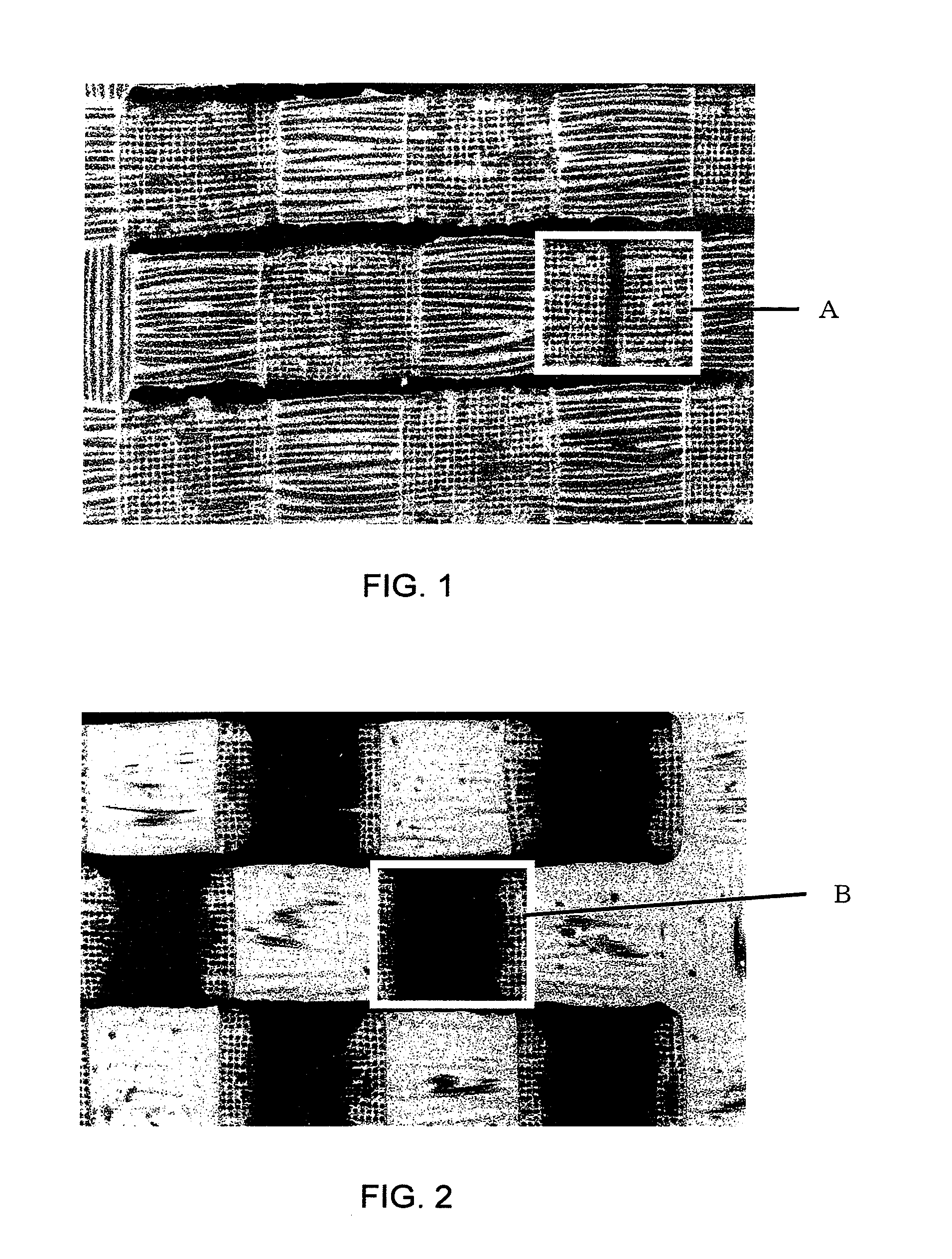Base fabric for air bag, method of producing the same and air bag
a technology of air bags and base fabrics, applied in weaving, pedestrian/occupant safety arrangements, vehicular safety arrangements, etc., can solve the problems of air bag stowability, air bag weight increase, air bag stowability, etc., to achieve air bag spread, air shieldability, heat resistance and flame retardancy, the effect of promoting the spread of air bags
- Summary
- Abstract
- Description
- Claims
- Application Information
AI Technical Summary
Benefits of technology
Problems solved by technology
Method used
Image
Examples
example 1
[0039]Yarns of 470 dtex / 72 filaments of nylon 66 fiber having a circular section were used as warp and weft and subjected to weaving. There was obtained a plain weave fabric having a warp weave density of 46 pc. / 2.54 cm and a like weft weave density. This fabric was then subjected to scouring and heat setting by a conventional method so that the warp weave density and the weft weave density were each kept at 46 pc. / 2.54 cm. Next, using a solventless type silicone resin with a viscosity of 15,000 mPa·s and using a stainless steel knife having an edge thickness of 0.1 mm at a portion of contact with the fabric and a urethane bed, the knife was pushed against the fabric at a sandwiching force of 2.5 N / cm to effect coating. Thereafter, heat treatment was performed at 180° C. for 60 seconds with use of a pin tenter dryer to afford a base fabric for an air bag having an applied resin quantity of 12 g / m2. In an intertwined portion interface as a warp-weft crossing portion, the area ratio o...
example 2
[0040]Using the same fabric as that having gone through weaving, scouring and heat setting in Example 1, coating was performed under the same conditions as in Example 1 except that there was used a stainless steel knife having an edge thickness at the contact portion of 0.2 mm and that the sandwiching force was set at 0.6 N / cm. Subsequent heat treatment was conducted also under the same conditions as in Example 1.
[0041]The air bag base fabric thus obtained was found to have an applied resin quantity of 18 g / m2 and an area ratio of the resin of 100% in the warp-weft crossing intertwined portion interface. The air bag base fabric proved to be superior in all of flame retardancy, slip-off resistance, flexibility and air shieldability.
example 3
[0042]Yarns of 470 dtex / 72 filaments of nylon 66 fiber having a circular section were used as warp and weft and subjected to weaving. There was obtained a plain fabric having a warp weave density of 53 pc. / 2.54 cm and a like weft weave density. This fabric was then subjected to heat setting so that the warp weave density and the weft weave density were each kept at 53 pc. / 2.54 cm. Next, using a solventless type silicone resin with a density of 15,000 mPa·s and using a stainless steel knife having an edge thickness of 0.1 mm at a portion of contact with the fabric and a urethane bed, the knife was pushed against the fabric at a sandwiching force of 2.5 N / cm to effect coating. Thereafter, heat treatment was performed at 180° C. for 60 seconds with use of a pin tenter dryer to afford a base fabric for an air bag having an applied resin quantity of 15 g / m2. In an intertwined portion interface as a warp-weft crossing portion, the area ratio of resin was 89% and the fabric was superior in...
PUM
| Property | Measurement | Unit |
|---|---|---|
| thickness | aaaaa | aaaaa |
| thickness | aaaaa | aaaaa |
| thickness | aaaaa | aaaaa |
Abstract
Description
Claims
Application Information
 Login to View More
Login to View More - R&D
- Intellectual Property
- Life Sciences
- Materials
- Tech Scout
- Unparalleled Data Quality
- Higher Quality Content
- 60% Fewer Hallucinations
Browse by: Latest US Patents, China's latest patents, Technical Efficacy Thesaurus, Application Domain, Technology Topic, Popular Technical Reports.
© 2025 PatSnap. All rights reserved.Legal|Privacy policy|Modern Slavery Act Transparency Statement|Sitemap|About US| Contact US: help@patsnap.com

